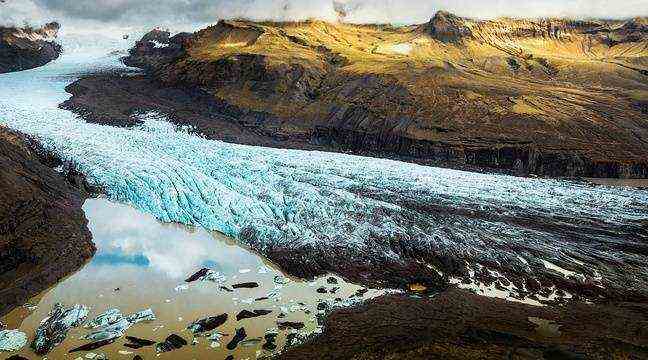The Vatna Glacier in Iceland, October 4, 2019 (illustration). – Shi Shang / Costfoto / Sipa USA / SI
There is something to raise once again the alarm signal of global warming. If forecasts are met, Iceland’s 400 or so glaciers could have almost disappeared by 2200. They have already lost around 750 km2 of surface area since the early 2000s, or 7% of their total area, according to a study published on Monday.
In total, the surface of Icelandic glaciers, which still cover just over 10% of the country, fell in 2019 to 10,400 km2, according to a publication by the specialist journal Jökull (“Glacier” in Icelandic). Since 1890, the area occupied by glaciers has fallen by nearly 2,200 km2, or 18%. But nearly a third of this decline has occurred since 2000, according to the latest point of Icelandic glaciologists, geologists and geophysicists.
First disappearance of a glacier in 2014
The shrinkage observed in two decades represents almost the total area of Hofsjökull (810 km2), the third largest ice cap on the North Atlantic island. “Variations in the area of glaciers in Iceland since the 1890s show a clear response to climatic variations,” the authors point out. In 2014, Iceland also recorded the first disappearance of one of its glaciers, the Ok, formerly Okjökull (“Ok glacier”) under the effect of global warming.
The research published on Monday is a contribution by Icelandic scientists to the next assessment report of the United Nations Intergovernmental Panel on Climate Change (IPCC), which is scheduled for publication in 2022. Above all, the country is far from be the only one facing this problem. Besides those in Iceland, the glaciers of Alaska and the Alps are among the fastest shrinking in the world in recent years, according to a large global study published in April in Nature. The approximately 220,000 glaciers on the planet lost 267 billion tonnes of ice on average per year between 2000 and 2019. An annual rate that has accelerated by 30% in two decades and is now close to 300 billion tonnes.

